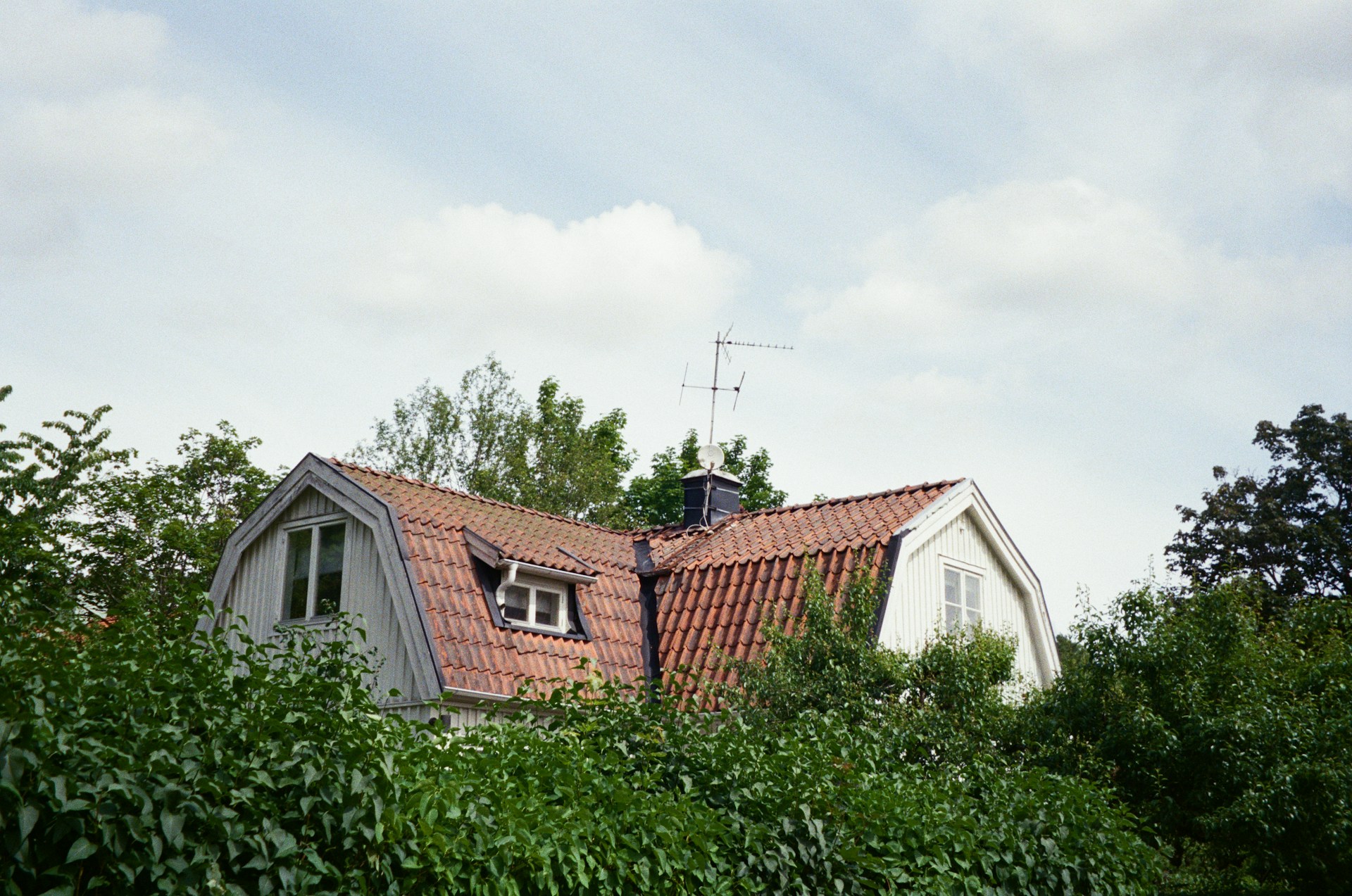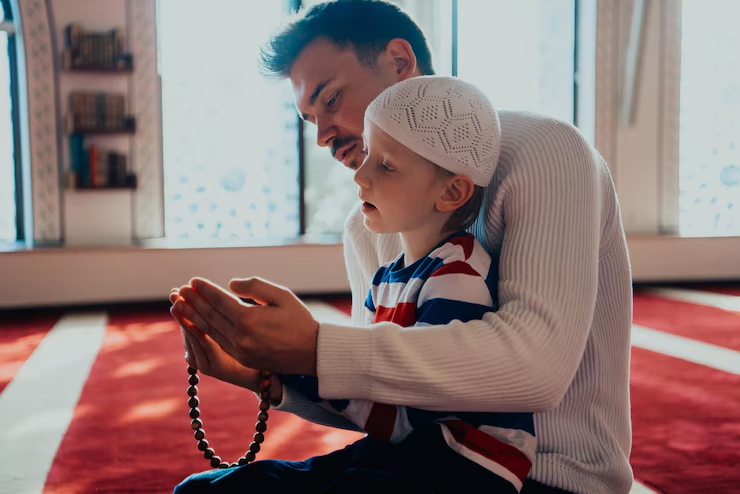Raised in LA and Orange County during the 80’s & 90’s, Ryan reflects back to remnants of both eras through creating artwork with vibrant color and exuberant floral elements. While his works hold minimal backstories, continually his work seems to brush upon a fleeting childhood, nostalgia, and the complex emotions of exploring adolescence.
Why is art important to you?
For me it is important because it is a way of communicating deeply to someone, without even having to be in the same room with them. Art can communicate to people across different lifetimes, languages and eras.
Will you share an example of one of these connections with your art?
I’ve had this experience with several collectors, who I hadn’t met until after they acquired paintings. Upon meeting them and chatting about my art, I am always amazed how similar the emotions that the artwork evokes. One collector was drawn to my work because in several pieces, I have the main figures holding a small animal, like how a child might hold a coveted stuffed animal, pet or blanky. It’s something other viewers have also noticed, and appreciated. I’ve received similar messages through Facebook and Instagram, sometimes from another country in a language I do not speak, and get to copy & paste into Google to read the viewers’ comments. It’s thrilling.
Did you have a small animal or toy that you found comforting when you were a child? Or, I guess I’m asking how you find that tenderness within your paintings?
I had cats in my childhood. And many toys, dinosaurs, my sisters’ My Little Pony and Barbie dolls, and a “baby blanket” that I clung to probably longer than most children.
Do you have a demographic that is generally interested in your work?
My collectors tend to be middle-aged professionals; though my biggest collector is actually a model and actress in her 70’s that has been a muse for various artists since the 1960’s. As for fans of the imagery and subject matter, my work tends to be popular amongst the college-aged LGBT community.
Sort of like pop-art era kids and then like our generation?
Yeah.
Does art have an emotional role in your life?
For me the most emotional role art plays with is nostalgia. When a painter includes some retro pop-culture imagery, or in non-representational artwork, the color or texture might be reminiscent of a wonderful memory or a haunting one. Those references to personal memories really tug at me emotionally.
Can you say more about this thought? I’m always interested in what makes other people nostalgic, specifically what triggers memory and nostalgia…some people really respond to smell (perfume, food), or familiar places, or emotions.
Yeah, I am told that smell is the strongest trigger for memory. I personally feel a great deal of nostalgia through visuals. For people like myself who grew up around swimming pools, spending long summer days at the pool, year after year throughout our childhood. Given those deep set childhood swimming pool experiences, a David Hockney swimming pool painting can have an amazing effect. The precision of his color use evokes the smell of chlorine and sunscreen, the warm poolside concrete, the freedom of a school-free summer. The rhythm Hockney constructed the water refractions at the bottom of the pool paintings brings back memories of all the senses.
What pop culture figures have been showing up in your work?
Marilyn I feel is a staple for many artists; I’ve also included Judy Garland, Rita Hayworth, Elizabeth Taylor, and Audrey Hepburn.
How are these characters specifically special to you?
For these old Hollywood portraits I was specifically drawn to these actresses due to the ambient way they were lit in their films. Also, their mannerism and tone that their characters had, lent itself to the stoic quality I was looking for in a subject.
I feel like your paintings convey a great deal of strength, beauty, and longing which relates to the women in your paintings (and speaks to the time period when they were each famous, right? SO emotional.) . Is this beyond the sense of nostalgia you mentioned?
The first one I painted was Rita Hayworth, and it was a small portrait within a large painting, “Landslide.” Hollywood movies are such a big part of my life, probably many American’s lives. I felt is was almost necessary that I one day include a bit of hollywood into the paintings, and I figured hollywood’s golden era would probably be a good place to start, and when I began to rewatch old films, the lighting really tipped me in these female’s direction.
I start with photographing a model. Then I use the photographs of the model and other gathered imagery from online or from books as references to paint from. I paint using oils on canvas. I enjoy using wet into wet techniques, glazing, as well as sfumato when rendering skin and creating atmosphere.What informs your decision when selecting materials and subject matter?
I started by asking friends, fellow artists, to pose for me when I first began exploring portraiture. Now I typically hire a model and do a photo-reference shoot. I don’t know the models I use very well, except I will often look for male models who have some kind of artistic outlook on life, whether they be a film or theatre student, a musician, or painter. After the photoshoot, I begin painting the figure without any plan of what subjects will be included on the canvas. Then I choose reference imagery of props, animals, plants, or flowers to add into the painting. I try to focus on the shape, color, texture and other formal elements of the additional subjects, rather than adding content to build a narrative.
Why is it important for your subjects to have an artistic outlook?
It’s a way I have been able to connect with my subjects without knowing them well. I tend to have instant empathy for someone who is seeking to have a creative career.How important do you feel an arts education is to emerging artists? Do you feel like it is necessary in order to establish an artistic practice?
I feel that for a driven emerging artist who has been exposed to the art world, it is not necessary to have an arts education. An emerging artist can attend shows to network and find peers, seek apprenticeships with artists whose work interests them, and receive critiques from other artists. For someone like myself, I knew little of the art world before attending college, growing up in a conservative community with limited exposure to contemporary art. I really needed the guidance and discipline of college to create my own studio practice and catch up on contemporary art knowledge.Do you have any early experiences in art that you would say “shaped you” or influence your process today?
I remember my first painting class where I stumbled upon glazing; once I started glazing, I never stopped.Who (or what) are your biggest influences? (and why?)
For me pop-culture, music, movies and television have been my biggest influences. It interests me, the emphasis pop-culture puts on milestones in our lives which we are all suppose to have, also the obsession the media has with “youth” and how fleeting it is. In many ways I’ve begun to think of “youth” as a subject that parallels well with the fragility of our planet’s current state, something that has also become more mainstream, with more politicians and celebrities becoming increasingly vocal about our environment and its creatures.Looking at your paintings, it seems like the models you’re interested in are fairly androgynous. Do these choices speak purely from your own aesthetic or are there deeper themes at play?
The androgyny is definitely an aesthetic I identify with and see how it comes out in the paintings. I do not feel feminine but femininity is something I always felt fearful of showing growing up. I never wanted to come across as feminine, and “out” myself as a gay person when I was young, growing up in an intolerant community. I saw effeminate and androgynous males get chastised and bullied daily when I was in school. As for my paintings, I feel they are better representations of how I felt growing up. I identified as male, though some days I wanted to be a “pretty” male, rather than a “handsome” one.
Do you think that kids today face the same hardships that you did when you were growing up?
I think they face similar hardships, but not the same. It seems like my generation experienced a cusp of prejudice which is now unraveling. I hear of kids today still being bullied and experiencing prejudice similar to what I witnessed as a kid. Though I hope now, having public, and celebrity heroes being advocates for gays will give this generation of kids more hope than what was displayed for 80’s and 90’s kids.
I noticed that the pop-culture references in your paintings convey this sense of youth, do you see yourself exploring older models in the future? Do you think it would have the same depth?
I do see myself exploring older models in the future, though the painting techniques I enjoy using lend themselves well for rendering youthful figures. I feel the paintings can have the same depth with various models, but the texture and glow of the figures would feel different. Also subject-wise for me, I find the college years of one’s life are the most memorable. I feel in a lot of ways I made my biggest accomplishments and biggest mistakes in those youthful years.
Do you feel comfortable sharing some of those landmarks with us?
Yeah, I feel one great landmark of the college years would be choosing where to live. Getting to choose the school and city where I wanted to take my life was the biggest choice and accomplishment I feel I’ve ever made. I left many friends and family that I loved dearly to start a new life for myself, so I could learn about life and myself. Of course my time in college also included making bad relationship choices, poor financial choices, but also making friends who have become like family.
As a Bay Area artist, the rising costs of space in the Bay Area has become a challenge. How do you find space to make your work? Do you have any suggestions for artists who are just starting out?
I ended up making a space in my home for working. And the size of my art has also reflected the space where I work. I used to create paintings up to 8 feet in width when I had a large art studio, now I create only easel sized paintings. My suggestion for an artist starting out would be to not feel obligated to have a traditional studio space, but instead be content with making a schedule with hours committed to work on art, to schedule it in as concrete working hours, and stick to it, whether they’re spending six hours a day painting at the computer desk, or beside the kitchen sink on the counter, I feel the time committed is the most valuable part of one’s practice.
It sounds like you are a very disciplined artist. Have you always been this way, or was it something you had to learn along the way?
It was something I learned along the way. I think I began enforcing a schedule for painting when my art college I attended began to have fewer and fewer hours to work in the communal painting studio. My friends and I began designating the evening hours it was open from 10pm-3am as our painting time. I guess having fewer time options contributed; if we wanted to paint, we had to be disciplined.
Is that still your favorite time to work?
It was for years, but at the moment, anytime is my favorite.
Are there any communities in the area that you visit regularly? Such as clubs or classes? Do you teach? If so, where?
Now that the galleries in San Francisco have spread away further and many have closed, I began visiting artists’ workspaces individually. I’ve found some of my favorite works of theirs are seen only in their studio, many artists artworks get purchased and sent away, before ever having a chance to be exhibited, never to be seen by the public. I also teach one day a week at a small private art school in San Francisco which has been nice, getting to hang out with other artists.
Who have you been following closely and why? Do you feel more inspired by peers or art history figures?
I feel more inspired by contemporary artists at the moment. Isabella Kirkland has been a big influence recently, her process is intense, she is thorough beyond belief with her subjects, how she researches each species, and studies actual specimens carefully before painting. Also last year I met with Timmothy Cummings, I reached out to him after seeing many of his shows throughout the last decade. It was nice to finally chat with him over coffee and also get some insight on how he works, his color is fantastic. He was also generous enough to come see my artwork and give feedback. I also watch Josephine Taylor’s work, I enjoy the white space she uses, and subtly in values. Lisa Yuskavage, I’m always curious to see what kind of color saturation she will use in her next body of work. And Masami Teraoka, the way he uses up the space, design-wise, I find brilliant.
How important is it to you to be supported by some sort of artistic community and why?
I worked on my paintings for a few years in a building where dozens of artists worked in its spaces. There was great camaraderie and lots of networking that went on, though I never quite felt at home there. It wasn’t until I visited Isabella Kirkland in her studio, and asked her more about how she works, that I realized I was similar in that I preferred to work alone, away, as a hermit.
Are you more comfortable working this way because it minimizes distractions for you, or does it feel more comfortable to work alone because you consider your work and process very personal and private?
I feel less distracted working alone.
How important is constructive feedback during your process? Do you find early criticism helpful or more of a hinderance?
It is important. While I may disagree at first with feedback I get, sometimes years later I’ll end up agreeing with the criticism. And some criticism I ignore and have never agreed with and never put into practice. Ultimately I decided to just focus on what I enjoy creating, because if I do not enjoy it, I will probably not commit the hours and heart into making it notable.
Ryan, You’re such a great sport. Thank you so much for taking the time to answer my questions thoughtfully.










